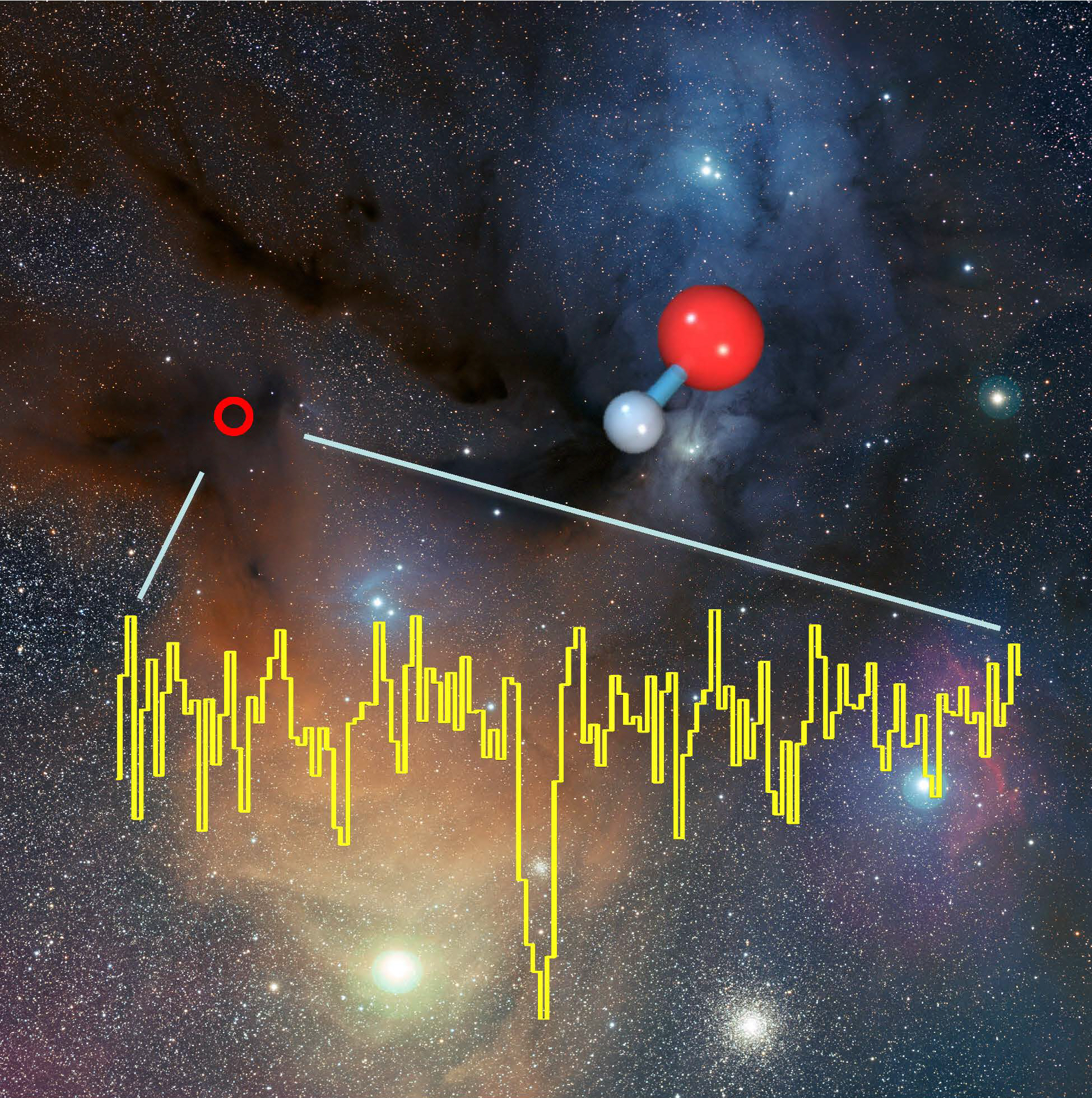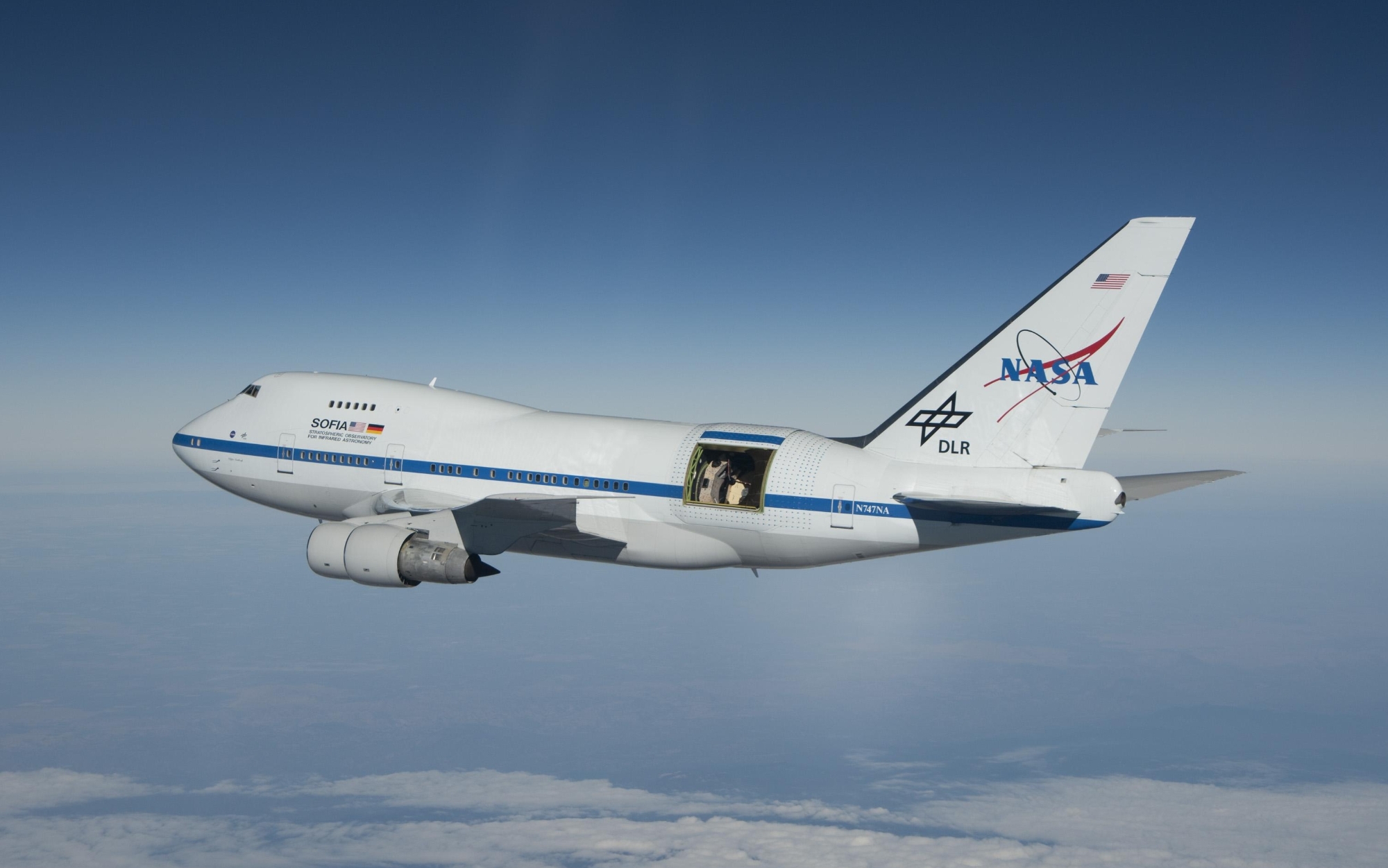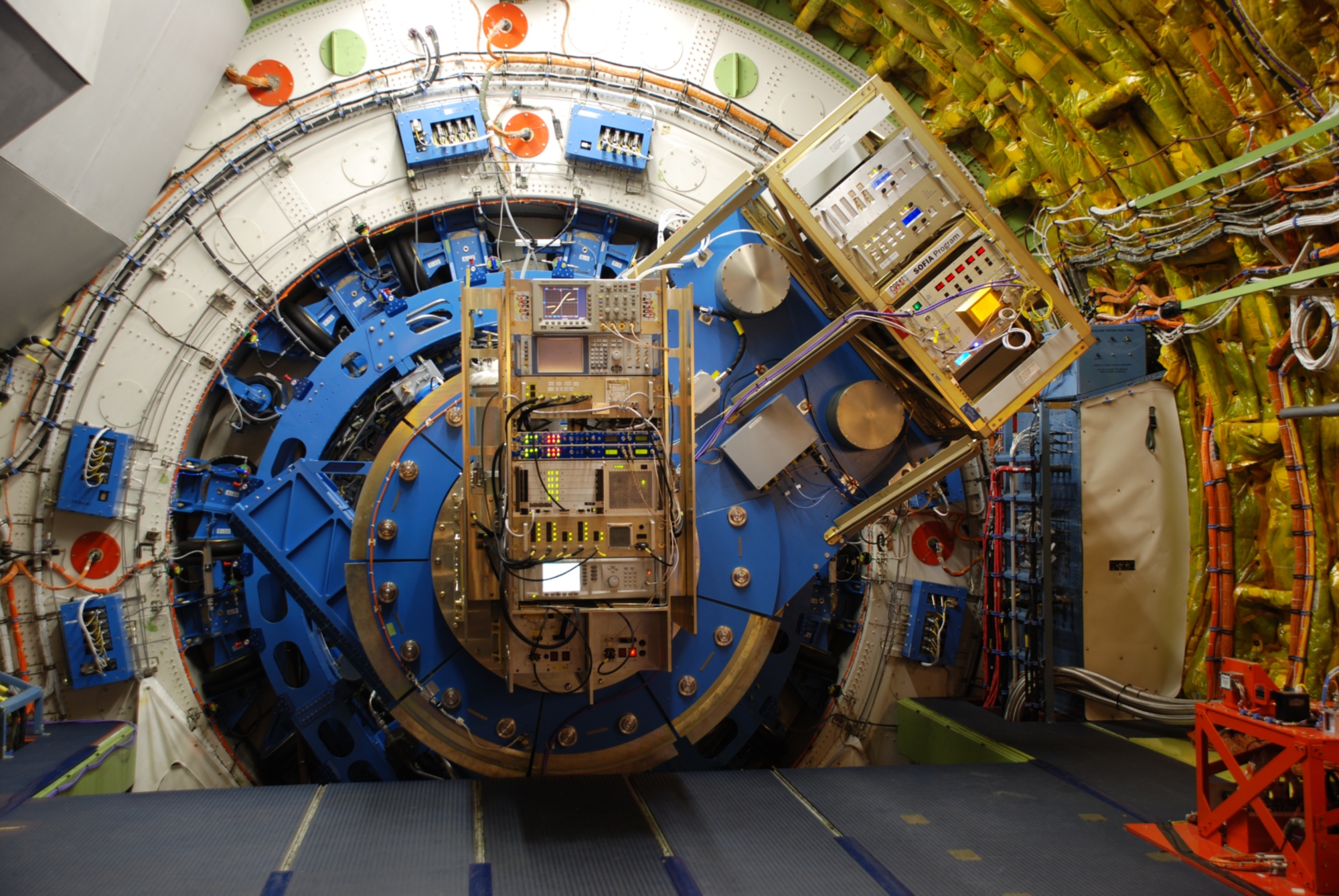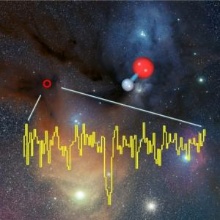SOFIA, the "Stratospheric Observatory for Infrared Astronomy", completed its first series of science flights, using the German Receiver for Astronomy at Terahertz Frequencies (GREAT). The scientific results are now being published in a special issue of the European journal “Astronomy & Astrophysics” (Volume 542, May 10) along with reports on GREAT’s advanced technologies. They include first detections of new interstellar molecules and important spectral lines in space, and address different stages of the star formation process. The “Deutsches SOFIA Institut” (DSI) of the University of Stuttgart coordinates SOFIA’s science mission and operation on behalf of the German partners.

Figure 1:
Optical color image of the rho Ophiuchi star formation region, about 400 light-years from
Earth, with dark dusty filamentary gas clouds. The position of the optically obscured low-mass
protostar IRAS16293-2422 towards which interstellar deuterated hydroxyl OD has been detected is
marked with a red circle. The absorption line spectrum, observed with GREAT onboard SOFIA, displays
the molecule’s fingerprint at a frequency of 1.3915 Terahertz (or 0.215 mm wavelength).
The inset shows the OD molecule (red: oxygene, gray: deuterium), an isotopic substitute of
hydroxyl (OH) with the hydrogen atom replaced by heavier deuterium. This deuterated molecule is an
important marker in the formation of interstellar water and may serve as a chemical clock in the
early star formation process.
The bright yellowish star in the bottom left is Antares, one of the brightest stars in the sky.
Below and to Antares’ right is the globular cluster Messier 4.
Credits: Spectrum: MPIfR/B. Parise, Photo: ESO/S. Guisard
(www.eso.org/~sguisard).
The first series of astronomical observations with GREAT on board of SOFIA were successfully completed in November 2011. Now, six months later, the scientific results have been published in a special issue of the prestigious European journal “Astronomy & Astrophysics”. In total, 22 articles by an international group of scientists report on the first astronomical results as well as the technologies employed in the GREAT instrument on board SOFIA.
As a joint project between NASA and the German Aerospace Center (Deutsches Zentrum für Luft- und Raumfahrt, DLR), SOFIA operates a 2.7-m telescope in a modified Boeing 747SP aircraft and is the world's largest ever airborne infrared observatory. SOFIA flies at altitudes as high as 13700 meters to provide access to astronomical signals at far-infrared wavelengths that would otherwise be blocked due to absorption by water vapour in the atmosphere. The SOFIA observatory and the GREAT instrument open the far-infrared skies for high-resolution spectroscopy, and GREAT pushes its technology to higher frequencies and sensitivities than ever reached before.
Many of the contributed papers study the star formation process in its earliest phases, first when the protostellar molecular cloud is contracting and condensing, and then when the embryonic star is vigorously interacting with its surrounding parental molecular cloud –tearing it apart and ionizing it. The high spectral resolution capabilities of GREAT enabled scientists to resolve the velocity field of gas in the parental molecular clouds traced by the important cooling line radiation of ionized carbon in several star forming regions.
GREAT detected the velocity signature of infalling gas motion (“collapse”) in the envelopes of three protostars, directly probing the dynamics of a forming star. Two interstellar molecular species were detected for the first time ever: OD, an isotopic substitute of hydroxyl (OH) with the hydrogen atom replaced by the heavier deuterium, and the mercapto radical SH., Observations of the ground-state transition of OH at a frequency of 2.5 Terahertz (120 microns wavelength) explored new astrochemical territories while pushing the technological frontier.
The remnant envelope of an evolved star, ionized by its hot stellar core, was also investigated as was the violent shock interaction of a supernova remnant and the surrounding interstellar medium. Furthermore, the circumnuclear accretion disk, ultimately feeding the black hole in the centre of the Milky Way galaxy was studied, as well as star formation in the circumnuclear region of the nearby galaxy IC342.
“The rich harvest of scientific results from this first observing campaign with SOFIA and the GREAT instrument gives a first glimpse of the tremendous scientific potential of this observatory and promises unique astronomical observations for years to come, particularly in the topical research areas of star formation and astrochemistry” states the Deputy Director of the SOFIA Science Mission, Hans Zinnecker, from DSI. In parallel with Rolf Güsten from the Max-Planck-Institut für Radioastronomie, the Principal Investigator of the GREAT project Zinnecker organized the selection process and ultimately selected some of the most exciting observing proposals from the German astronomical community.
“The high resolving power of the GREAT spectrometer is designed for studies of interstellar gas and the stellar life cycle, from a protostar’s early embryonic phase when still embedded in its parental cloud to an evolved star’s death when the stellar envelope is ejected back into space”, says Güsten. “This stunning collection of first scientific results is reward for the many years of development work, and underlines the huge scientific potential of airborne far-infrared spectroscopy.”
Note that results and papers based on early science observations with the FORCAST receiver (mid-infrared camera) onboard SOFIA have been published in a special issue of the U.S. journal "Astrophysical Journal Letters" that was covered in a separate press release.


Figure 2:
SOFIA, the “Stratospheric Observatory for Infrared Astronomy” cruises above Southern California
with its large cavity door wide open; the 2.7-meter German-built telescope is visible. At altitudes
of up to 45000 feet (~14 km) the observatory operates above 99.8% of the atmospheric water vapour.
The GREAT far-infrared spectrometer (the vertical structure in the foreground) is mounted to the
telescope counterweight flange inside the pressurized cabin. During observations GREAT rotates ±20
degrees from the vertical, while the telescope (invisible on the far side) and its counterweight
(seen here in blue at an angle of 45 degrees) move between roughly 25 and 65 degrees from the
vertical.
Credit: SOFIA (NASA), GREAT (R. Güsten)
GREAT, the German Receiver for Astronomy at Terahertz Frequencies is a receiver for spectroscopic observations in the far-infrared spectral regime between frequencies of 1.25 and 5 terahertz (60-240 microns), which are not accessible from the ground due to absorption by water vapour in the atmosphere. GREAT is a first generation German SOFIA instrument, developed by the Max-Planck Institute for Radio Astronomy (MPIfR) and the KOSMA at the Universität zu Köln, in collaboration with the Max-Planck Institute for Solar System Research and the DLR Institute for Planetary Research. Rolf Güsten (MPIfR) is the Principal Investigator for GREAT. The development of the instrument was financed by the participating institutes, the Max-Planck Society (MPG), and the Deutsche Forschungsgemeinschaft (DFG).
Original Papers:
MPI fuer Radioastronomie
DLR
E-mail: njunkes@mpifr-bonn.mpg.de


